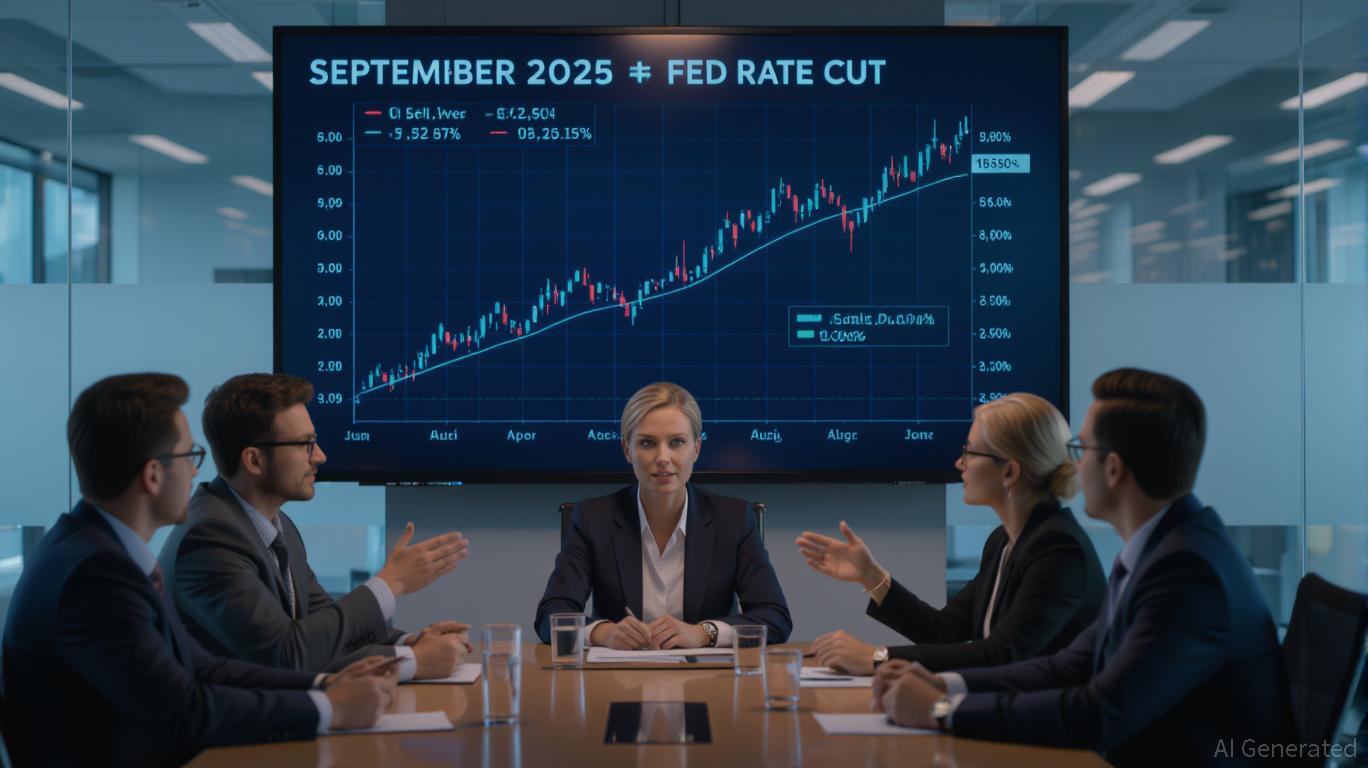
The U.S. equity market is undergoing a quiet but profound shift as investors increasingly price in a Federal Reserve rate cut in September 2025. With the probability of a 25-basis-point easing now at 83.4%, according to CME FedWatch data, the market’s optimism is reshaping risk appetite and triggering sector rotations that reflect a growing belief in a “soft landing” for the economy. This article examines how these expectations are influencing high-quality growth equities, small-cap stocks, and broader portfolio positioning, while highlighting the nuanced risks that remain.
The Fed’s Dovish Pivot and Market Sentiment
The Federal Reserve’s dual mandate—price stability and maximum employment—has long guided its policy decisions. However, recent data has created a divergence between these goals. While core PPI inflation remains stubbornly above 3%, labor market resilience (unemployment at 4.2% as of November 2024) and solid GDP growth (2.8% in Q3 2024) have pushed the Fed toward a more accommodative stance. Markets are now pricing in two rate cuts in 2025, with the first likely in September, bringing the federal funds rate closer to the FOMC’s long-run neutral rate of 3.0%.
This dovish pivot has emboldened investors, particularly in sectors sensitive to interest rate cycles. The anticipation of lower borrowing costs is fueling a rotation into growth-oriented assets, even as inflationary pressures persist.
High-Quality Growth Equities: A New Era of Valuation Expansion
High-quality growth stocks—those with durable cash flows, strong balance sheets, and exposure to long-duration trends like AI and cloud computing—are poised to benefit from the Fed’s easing. Lower interest rates reduce the discount rate applied to future earnings, making these companies more attractive. For example, NVIDIA’s Q1 2025 revenue of $26 billion, driven by AI infrastructure demand, underscores the sector’s potential.
However, investors must remain cautious. While growth stocks historically outperform in a rate-cut environment, overvaluation remains a risk. A disciplined approach—focusing on free cash flow yields and earnings visibility—is critical. AI-driven infrastructure plays, such as Microsoft and Amazon, are well-positioned, but investors should avoid speculative subsectors lacking clear monetization paths.
Small-Cap Equities: A Mixed but Positive Outlook
Small-cap stocks, which are more sensitive to liquidity and borrowing costs, are likely to see a boost from rate cuts. These companies often rely on debt to fund growth, and lower interest rates could improve margins and earnings growth. However, the extent of the benefit depends on the broader economic context.
In a soft-landing scenario—where growth remains stable and inflation moderates—small-cap equities could outperform. Conversely, if the rate cut is a response to a weakening economy (e.g., a sharp slowdown in hiring or a housing market correction), the upside may be limited. Investors should prioritize small-cap firms with strong balance sheets and exposure to resilient sectors like healthcare or renewable energy.
Sector Rotations: From Defensives to Cyclicals
The anticipated rate cut is triggering a rotation from defensive sectors (e.g., utilities, consumer staples) to cyclicals (e.g., technology, real estate, and consumer discretionary). Historically, sectors with long-duration earnings, such as tech and housing, have outperformed during easing cycles.
For instance, homebuilders and REITs stand to gain from reduced mortgage rates, which could stimulate demand for housing and commercial real estate. Meanwhile, the financial sector faces a mixed outlook: while asset managers and insurers may thrive in a stable rate environment, regional banks with exposure to commercial real estate could face headwinds if the economy weakens.
Positioning for a Soft Landing: A Balanced Approach
A “soft landing” requires a strategic blend of growth, income, and defensive assets. Investors should consider:
1. Overweighting AI/cloud infrastructure and defensive financials to capitalize on secular trends and stable earnings.
2. Selectively allocating to small-cap equities with strong fundamentals and low debt.
3. Hedging against macro risks by including emerging markets with structural growth drivers (e.g., India’s tech sector, Indonesia’s energy exports) while managing currency exposure.
Risks and Challenges: Staying Grounded
While the Fed’s easing offers opportunities, it also introduces risks. Persistent inflation, geopolitical tensions, and trade policy uncertainty could disrupt the soft-landing narrative. Additionally, a stagflationary scenario—where inflation remains high despite weak growth—could erode returns. Investors must remain agile, adjusting sector allocations based on real-time data, such as August and September inflation reports.
Conclusion: Strategic Diversification in a Shifting Landscape
The September 2025 rate cut is a pivotal event with far-reaching implications. As the Fed navigates the delicate balance between inflation control and economic support, investors must adopt a disciplined, diversified approach. By prioritizing high-quality growth, selectively positioning in small-cap equities, and hedging against macro risks, portfolios can capitalize on the opportunities presented by a dovish pivot while remaining resilient to potential headwinds.
In this environment, patience and adaptability will be key. The path to a soft landing may be bumpy, but with careful positioning, investors can navigate the uncertainties and position for long-term growth.
